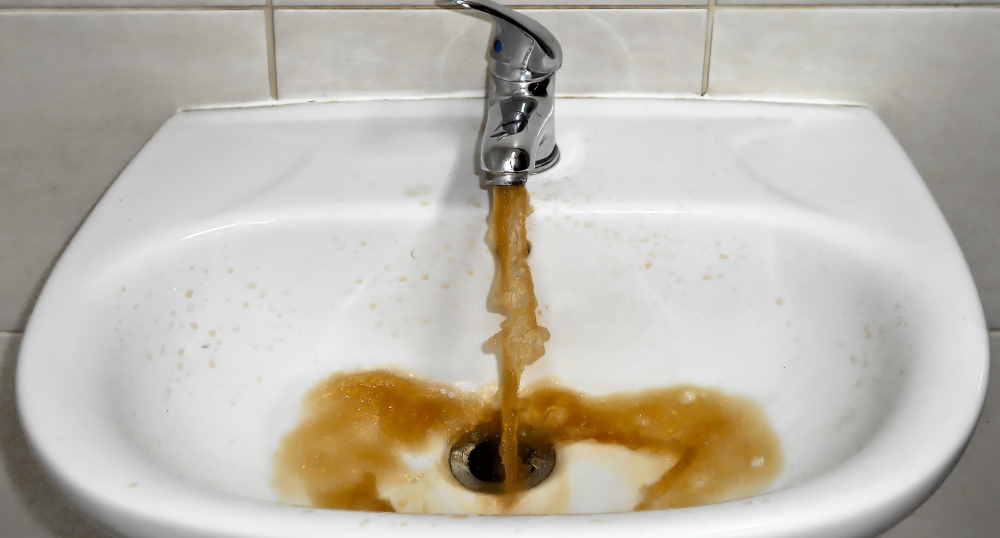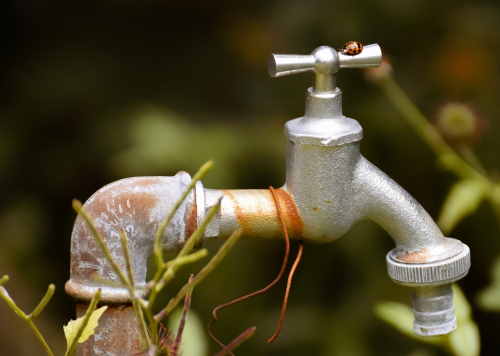If you wonder, why do you see black debris in your water, let me try to explain? Actually, there are a few common causes and reasons your water isn’t crystal clear as you might expect. Sometimes you can see that water quality isn’t 100% as it should be. Why is that, and how to deal with it?
Depending on what is the source of black debris in the water, you may be facing a big problem or something easy to resolve. Whatever the cause, you don’t want any particles in your water, and it should be clear as described in the first paragraph. In case the faucet is producing unwanted particles, there are reasons behind it. Try to find a problem, to resolve it correctly.
Water quality in the U.S.
Water quality in the U.S. is an issue that has been getting a lot of national attention in the past few years. How good and healthy is the water we all drinking every day?
Drinking water quality in the United States is generally safe. In 2016, more than 90% of the nation’s community water systems were in compliance with U.S. Environmental Protection Agency (EPA) standards. More than 286 million Americans get their tap water from a community water system.
Every community water supplier must provide an annual report, sometimes called a Consumer Confidence Report, or “CCR,” to its customers. The report provides information on local drinking water quality, including the water’s source, contaminants found in the water, and how consumers can get involved in protecting drinking water.
Private wells, which are not regulated by the EPA, supply drinking water to over 15 million homes. Well, owners are responsible for keeping their water clean and safe. Visit CDC’s Private Wells page for more information on the water quality of private groundwater wells.
So, the good news is that most Americans can enjoy fresh, clean, and healthy water from a municipal water supply or a well water system. However, private wells are not regulated by the EPA, and well owners are responsible for keeping their water clean, safe, and suitable for drinking. I’ve explained already: What causes black sediments in well water? Read the previously published article, and find out how to remove dirt from the well water.
Black specks floating around the water from the faucet
In case that black specks floating in the water you pour from the faucet, I suppose you want to identify the problem and fix the issue. I’m going to write a few possible causes of black particles in your water.

If your water appears to be smudgy, oily, or it has black debris, it could be a small issue, but also a big problem you’re facing with.
Sand or silt

If you have noticed a tiny black or brown colored piece of sand or silt, it could be that there was plumbing pipe repair nearby. This problem has been mostly related to the well water system and not the municipal water supply. The water isn’t harmful to your body, but you don’t want the silt continuously to be present in the water.
Sand or silt in water could end up wearing out your appliances such as the washing machine or dishwasher more quickly than normal. Additionally, contaminated water could potentially damage your well pump. If that’s happened try to allow the water to run for a few days if the well is new. You can even install a screen or a liner in a sandstone.
Mineral traces in the water
Noticing black particles in the water? They are often caused by the presence of iron or manganese in the water system.
These particles usually are harmless to digest, but they do give your water a less than clear appearance. Mineral traces usually stain clean dishes, laundry, and plumbing fixtures.
APEC Water Systems ROES-50 Essence Series removes mineral traces and many other contaminants from the water.
This is a Certified Ultra Safe Reverse Osmosis Drinking Water Filter System.
By filtering your water you’ll remove salt, manganese, iron, fluoride, lead, and calcium. Most mineral constituents of water are physically larger than water molecules and are trapped by the filter membrane. That way all those minerals are removed from drinking water when filtered through APEC Water System.
Mineral traces in water could be a hint that a rubber hose somewhere in your home’s plumbing system is disintegrating. This typically happens due to chlorine being added to water as a disinfectant. The flex hose that leads to your water heater is also a huge culprit and you will likely need to call a professional to replace the hose.
Corroded water heater
Take a hot shower and then you see black specks? The problem could be with an old and corroded water heater.
The logic explains itself. When the black specks only appear when you’re running hot water, the first place you should look is the water heater. Your water heater unit probably came to the end of its lifespan. The average lifespan of a tank water heater is between 8 and 12 years. Sometimes water tanks corrode more quickly, depending on usage and maintenance. If you think your tank should run a few more years, try draining the tank and flushing the lines.
If your water heater is getting old you may want to consider replacing it. Try to find an appropriate water heater before a bigger issue appears.
Old pipes
Over time, due to water affecting metal pipes, waterlines can wear down and start to corrode. In case you have worn out water pipes, it’s a good idea to call for a licensed plumber. He needs to inspect your plumbing to see if old pipes are in your home or the municipal system.

Rust in water will normally show up as brownish-orange in color and sometimes even black.
These particles are going to stem from rusted steel or plumbing pipes and come in irregular shapes and sizes.
If your water is persistently bringing up rust particles while running cold water in particular, you’ll want to call the water authority as it could be coming from the municipal supply. Whatever the reason, you’ll need professional help.
On the other hand, if the issue is coming from your hot water in one or two faucets and eventually clears up after running a while, this might mean your steel pipes are rusting. In this case, you’d also want to have a plumber check on them before the issue causes more problems over time.
Granular activated Carbon
Most water home filter systems use GAC in their cartridges to purify their water. These particles are going to be more obvious in appearance, similar to coffee grounds. Solving this issue could be as easy as replacing the filter cartridge. Make sure to replace the water filter on time. Check on this Pur water filter indicator light, and find out what light color indicates.
If you’re noticing issues other than the above-mentioned, reach out to a plumber to come out and investigate. Make sure you’re using uncontaminated water. Keep your health and use uncontaminated water only. Don’t use water with black debris.